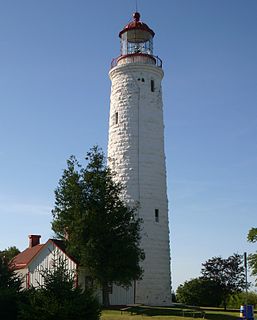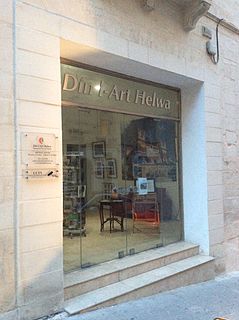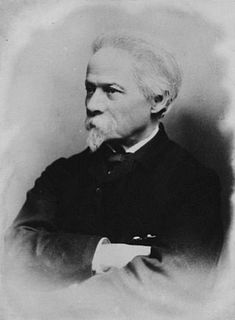Related Research Articles

The National Trust for Scotland for Places of Historic Interest or Natural Beauty, commonly known as the National Trust for Scotland, is a Scottish conservation organisation. It is the largest membership organisation in Scotland and describes itself as "the conservation charity that protects and promotes Scotland's natural and cultural heritage for present and future generations to enjoy".

English Heritage is a charity that manages over 400 historic monuments, buildings and places. These include prehistoric sites, medieval castles, Roman forts and country houses.
This page gives an overview of the complex structure of environmental and cultural conservation in the United Kingdom.

Louis-Joseph Papineau, born in Montreal, Quebec, was a politician, lawyer, and the landlord of the seigneurie de la Petite-Nation. He was the leader of the reformist Patriote movement before the Lower Canada Rebellion of 1837–1838. His father was Joseph Papineau, also a politician in Quebec. Papineau was the eldest of eight children and was the grandfather of the journalist Henri Bourassa, founder of the newspaper Le Devoir. The Papineau metro station and l'École Secondaire Louis-Joseph Papineau in Montreal were named after him.

Historic preservation (US), heritage preservation or heritage conservation (UK), is an endeavor that seeks to preserve, conserve and protect buildings, objects, landscapes or other artifacts of historical significance. It is a philosophical concept that became popular in the twentieth century, which maintains that cities as products of centuries’ development should be obligated to protect their patrimonial legacy. The term refers specifically to the preservation of the built environment, and not to preservation of, for example, primeval forests or wilderness.

Montebello is a municipality located in the Papineau Regional County Municipality of Western Quebec, Canada. At the 2001 census, there were 1,039 permanent residents. The village has a total area of 7.95 square kilometres (3.07 sq mi), and is located at the eastern edge of Quebec's Outaouais region. It is located on the border with Ontario.

The Fairmont Le Château Montebello, formerly and commonly known as the Château Montebello, is a historic hotel and resort complex in Montebello, Quebec, Canada. The resort features a large game reserve, as well as claims to be the largest wooden structure in the world. The wooden hotel structure was developed by Victor Nymark.

Sheringham Point Lighthouse is located on Vancouver Island, British Columbia, near the community of Shirley. Built in 1912 following the fatal wreck of the SS Valencia six years earlier, it is still used for navigation. The point was named for William L. Sheringham who took part in various naval surveys although not in this area.

Dumfries House is a Palladian country house in Ayrshire, Scotland. It is located within a large estate, around two miles (3 km) west of Cumnock. Noted for being one of the few such houses with much of its original 18th-century furniture still present, including specially commissioned Thomas Chippendale pieces, the house and estate is now owned by The Prince's Foundation, a charity which maintains it as a visitor attraction and hospitality and wedding venue. Both the house and the gardens are listed as significant aspects of Scottish heritage.

Babington is a small village between Radstock and Frome, Somerset, England, which has now largely disappeared.

The Heritage Lighthouse Protection Act is an Act of the Parliament of Canada for the designation and preservation of historically significant Canadian lighthouses. It was passed by the Canadian Parliament in May 2008. The act set up a public nomination process and sets heritage building conservation standards for lighthouses which are officially designated. First introduced in 2000 as Bill S-21 in the Senate of Canada the bill enjoyed consistent multi-party support despite the unpredictable legislative agendas of minority Parliaments and was repeatedly re-introduced. The final vote of approval was made by the Canadian Senate in 2008 and the bill received Royal Assent on May 29, 2008.

The Bath Preservation Trust is a charity that is based in Bath, Somerset, England, which exists to safeguard for the public benefit the historic character and amenities of the city, a UNESCO World Heritage Site, and its environs. The Trust is independent, funded by public membership, grants, donations and income from four museums that it operates in Bath: No. 1 Royal Crescent, the Museum of Bath Architecture, Beckford's Tower, and the Herschel Museum of Astronomy.

The Prince's Charities is a non-profit organisation that has associations with Charles, Prince of Wales. The Prince's Charities, supported by The Prince's Charities Foundation, is based in the United Kingdom and comprises 19 organisations of which the Prince of Wales is patron or president; 18 were founded personally by Charles.

Din l-Art Ħelwa is a non-governmental and non-profit, voluntary organisation founded in 1968 by Maltese Judge Maurice Caruana Curran to safeguard Malta's cultural heritage and natural environment. Since its foundation, Din l-Art Ħelwa has restored numerous cultural sites of historic and environmental importance. The organisation promotes the preservation and protection of historic buildings and monuments, the character of Malta's towns and villages, and places of natural beauty. They stimulate the enforcement of existing laws and the enactment of new ones for the protection of Malta's natural and built heritage.

The Historic Chapels Trust is a British Registered Charity set up to care for redundant non-Anglican churches, chapels, and places of worship in England. To date, its holdings encompass various nonconformist Christian denominations and Roman Catholic sites.

Napoléon Bourassa was a prominent Canadian architect, painter and writer whose offices were located in Montreal, Quebec.

The ‘Manoir Papineau’ was home to the Papineau family from 1850 to 1929. The house along with outbuildings, landscaped gardens and grounds are now open to the public and managed by Parks Canada who became the custodians in 1993; the site represents one of the most treasured heritage locations in the area surrounding La Petite-Nation and in the greater Ottawa River region. It was designed primarily to commemorate Louis-Joseph Papineau (1786-1871), the man who was to become a leading figure in Canadian politics during the 19th century, as the first French-Canadian nationalist leader. He later became the first seigneur of La Petite-Nation. The sumptuous house was built after Louis-Joseph Papineau returned from political exile in Europe, during the mid-1800s; he lived in the manor from 1846 with his wife and four children until his death. His descendants lived on at the house until the 1920s. Some of the more notable of these included his youngest daughter Azélie, mother to Henri Bourassa the famous journalist and founder of Canadian newspaper Le Devoir. Also, Talbot Mercer Papineau lawyer and decorated soldier, one of four Canadians featured in the book Tapestry of War: A Private View of Canadians in the Great War, by Sandra Gwyn. Major Papineau was portrayed by his fifth cousin, twice removed, then future Canadian Prime Minister Justin Trudeau, in the Canadian Broadcasting Corporation's telefilm, The Great War.

The Noss Head Lighthouse is an active 19th-century lighthouse near Wick in Caithness in the Highland council area of Scotland. It is located at the end of Noss Head, a peninsula on the north-west coast of Caithness that overlooks Sinclairs Bay, three miles north-east of Wick. It is notable as being the first lighthouse that was built with a diagonally-paned lantern room.

The Sillery Heritage Site, formerly known as the Sillery Historic District, is a territory containing historic residential and institutional properties, as well as woodlands, located in the Sainte-Foy–Sillery–Cap-Rouge borough of Quebec City, Canada. It is one of four heritage sites which are located in the City of Quebec. Having been called the "cradle of the Quebec nation," it includes approximately 350 buildings situated on a linear 3.5 kilometres wide landscape, which is alongside, as well as an integral part of the coast of the Saint Lawrence River. The built environment was constructed in all of the time periods, including and following the foundation of New France.
References
- ↑ 'Lighthouse Bill Protecting Our Lighthouses - The Icons of Canada's Maritime Heritage' Heritage Canada Foundation Featured Heritage Buildings by Douglas Franklin "Archived copy". Archived from the original on 2008-05-13. Retrieved 2008-06-10.CS1 maint: archived copy as title (link)